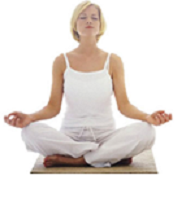|
Toolkit for Individuals
Each Toolkit includes:
Pain, whether acute or chronic, is the body’s way of signalling that a potential threat to our health or problem exists. Thus, determining the causes to the pain, whether it be a single cause, such as a splinter in our finger or an injury to our ankle, or it may be multiple causes of chronic back pain or headache. The key to understanding, managing, and preventing chronic pain is to determine what combination of factors are contributing to delayed recovery and the chronic pain condition. These contributing factors exist in the seven realms or domains of our lives include the Body, Lifestyle, Emotions, Society, Spirit, Mind, and Environment. Interestingly, the acronym for these seven realms is BLESS ME. The tool kits include brief training on enhancing protective factors, reducing risk factors and preventing chronic pain. The following factors are focused on: |
|
Body and Health
|
 |
Lifestyle and Behaviors
|
 |
Emotions and Feelings
|
 |
Society and Relationships
|
 |
Spirit and Beliefs
|
 |
Mind and Atitude
|
 |
Environment
|
 |
Order your toolkit at Toolkits

